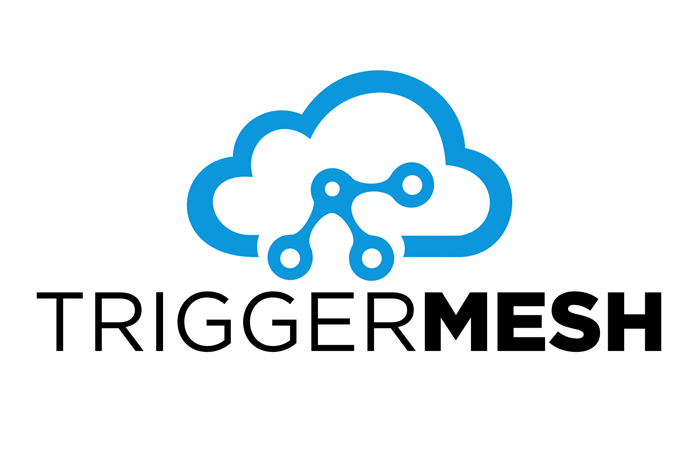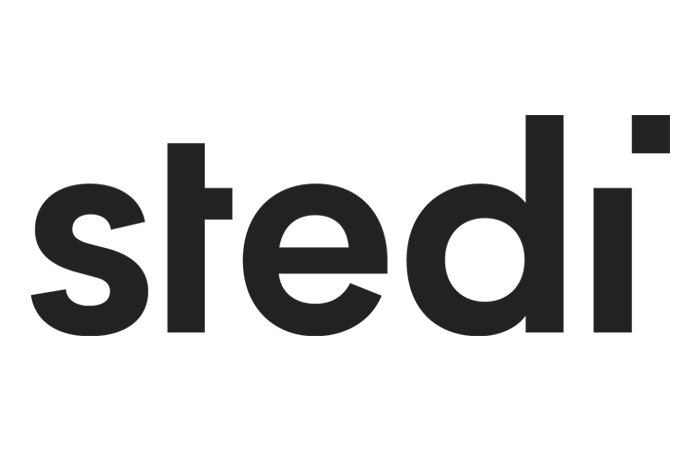Off-by-none: Issue #110
October 6, 2020
Only have a few minutes? Check out this week's MOST POPULAR links as chosen by our email subscribers.
Timestream is on my side... ⏳
Welcome to Issue #110 of Off-by-none. There’s lots of serverless ahead!
Last week, we were advised to think serverless instead of Kubernetes, we learned how to choose the right messaging system, and we got a new approach to stateful serverless. This week, we get a new serverless time series database, the race for gRPC at the edge is on, and Lambda becomes child’s play. Plus, we have plenty of content from the serverless community.
Serverless News & Announcements 📣
The TriggerMesh guide “What Every CIO Needs to Know about Serverless” compares major offerings and explains concepts like cloud native and microservices in plain English. Use it to inform your peers / managers on serverless benefits and options. Sponsored
Cloudflare announced support for gRPC. This should put every other edge provider on notice. Also, Adobe added more tools for building custom applications on their serverless platform. There’s a trend here.
Some company named Macrometa raised a $7M seed round to make its Global Data Network and Edge Computing Service ubiquitous. Interesting concept around “a combination of a globally distributed noSQL database, a low latency stream data processing engine, and functions as a service runtime, all integrated together as a simple, elastic, serverless cloud.” Lots of stiff competition in this market, even more so now that Signal Sciences and Fastly have joined forces.
In other serverless news, a new FaaS provider called Second State Serverless is all about Rust and WebAssembly. And, you can now store and access time series data at any scale with Amazon Timestream, which is now Generally Available.
Serverless Stories & Use Case 📖
Nicholas Ionata explains how they used Lambda to serverlessly migrate 1.58 Billion Elasticsearch Documents. Seems like there should be a service for this.
Pavan Govindaraju shares 5 lessons from building a delivery app using AWS. It’s a short read, but the takeaways are valuable. And for those of you thinking about going cloud native, Yiquan Ong suggests taking baby steps when decoupling monoliths on AWS.
And because every newsletter wouldn’t be complete without a solid serverless use case, Anushka Rustagi will walk you through PDF generation with AWS Lambda.
Serverless Concepts 🏗
JUST LAUNCHED: AWS Serverless for Startups
For aspiring entrepreneurs to technical founders, get access to AWS credits & technical resources through our newly launched serverless hub. Build, iterate, and scale faster. Learn more here. Sponsored
The team over at Dashbird shared The Ultimate Guide to AWS DynamoDB, though I’d still recommend taking a look at Alex DeBrie’s “DynamoDB, explained” as well.
Ismail Egilmez takes a crack at comparing AWS, Google, and Microsoft for serverless, and Yann Stoneman suggests that you think twice before using Step Functions (because of quotas).
Chris Munns posted the slides from his “Networking Best Practices for Your Serverless Applications” Tech Talk. Super useful information in here, and apparently the “video is coming soon.”
If you’re like me and IAM gives you a headache, this visual introduction to AWS Lambda permissions by Harprit Singh might help. And speaking of security, Jeff Barr has an Amazon S3 Update about three new security & access control features.
Serverless Tutorials 👷♀️
There never seems to be a shortage of serverless tutorials, so here are a few that stood out to me.
How to Instantaneously Install NPM Packages While Supporting Multi-version and Avoiding Duplications
Watch Schachar Levin unveil the solution Wix Engineering implemented to to support complex npm dependencies trees allowing multiple versions support, deduplicating packages, minimizing storage and download time, while making node able to import packages in a new and efficient way. Sponsored
I really do love the idea of serverless Redis, so if you haven’t looked at Lambda Store yet, Sven Anderson’s Build a Serverless API with Python and Redis could change your mind.
For those just getting started, this post on understanding serverless architecture and deploying a web app using AWS seems to be quite popular. You may also want to look at this guide to writing your first AWS SAM application.
For the slightly more advanced, Ajit Inamdar will show you how to secure access to AWS API Gateway using Amazon Cognito User Pools as an authorizer, Paulo Carvalho explains how to create a private serverless REST API with Lambda using SAM, and Almir Zulic gives you the deets for building a Serverless React/Vue/Angular frontend application with CI/CD.
Since everyone loves a good debate, I’ll just throw Yash Sanghvi’s Triggering one AWS Lambda from another using the serverless framework post out there. Discuss amongst yourselves.
And finally, this post about AWS Lambda Retrieving Data From RDS was going really well until it recommended using connection pools. I shared some thoughts on this.
Serverless Security 🔒
We seem to hear less and less about serverless security, but I thought that Wassim Chegham’s CLAD Model was interesting. It’s for Azure, but I think the principles apply to other cloud providers as well.
Serverless Reads 🤓
Radu Vunvulea’s observations in “Past and present” are really interesting. He says that the lack of education and training is what leads to incorrect implementations of serverless, which can then lead to increased costs and delays. Also, I tend to agree that micro-frontends are a good way to streamline the development process instead of delegating to other teams.
A Rackspace GM highlights benefits of being a multi-cloud provider, including some thoughts on why serverless is “the most cost-effective way for people that have variability.”
I interviewed Taylor Otwell about Laravel Vapor just after it was released, and most of the feedback has been extremely positive. This post about using Laravel Vapor for your SaaS business has some criticism about the wisdom of using this type of model. I have no problem dismissing vendor lock-in from a cloud provider perspective, but is there more merit to it with all-in-one providers?
Finally, Josh Armitage is beginning his quest for serverless CQRS & Event Sourcing. It may end up being an interesting journey to follow.
Podcasts, Videos, and more 🍿
In the conclusion of this two part episode of Serverless Chats, I finish my conversation about Optimizing your Lambda Functions with Alex Casalboni. There are a lot of good tips and tricks in here to squeeze extra performance out of your Lambda functions as well as balancing the cost.
Marcia Villalba has another great video, this time answering “What is serverless?”, with all the important concepts in less than 10 minutes! And if you still have questions, maybe watch Lambda explained by a 12 year old.
New from AWS 🆕
Wow, so a lot of stuff came out of AWS this week! I’ve distilled down the important bits the best I could.
As we already mentioned, Amazon Timestream is now Generally Available. For the right applications, this will make like a lot easier. Plus, you can store your data for up to 200 years, so even your great-great-great grandkids will know what your IoT devices were collecting.
AWS AppSync added support for AWS WAF, which is pretty cool. Any extra protection for your serverless endpoints is a very good thing. And if you’re worried about managing all your WAF configs, AWS Centralized WAF and VPC Security Group Management Solution is now Generally Available as well.
Amazon CloudWatch Logs now supports two subscription filters per log group, which means you can now trigger multiple workflows instead of needing to use a Lambda function to delegate the work. Good news for observability providers.
Amazon EventBridge Schema Registry announced support for JSON Schema, which allows you to validate, annotate, and manipulate JSON documents conforming to the JSON Schema Draft 4 specification.
In other interesting AWS news, AWS Lake Formation now supports Active Directory and SAML providers for Amazon Athena, AWS and Grafana Labs launched an AWS X-Ray data source plugin, and AWS CodePipeline now Supports git clone for Source Actions.
Also, Amazon CloudFront launched in two new countries (Mexico and New Zealand), Amazon EFS now integrates with AWS Systems Manager to simplify management of Amazon EFS clients, and Amazon Textract supports customer S3 buckets.
There’s also a redesigned AWS Architecture Center, you now can design and visualize Amazon Keyspaces data models more easily by using NoSQL Workbench, and Amazon S3 Object Ownership is available to enable bucket owners to automatically assume ownership of objects uploaded to their buckets.
Serverless Jobs 👩💻 Sponsored
Serverless Engineer – stedi.com
At Stedi, we’re working in one of the biggest markets on the planet – EDI, the technological backbone of the physical product economy. We’re building a next-generation platform: a ubiquitous commercial trading network to automate the trillions of dollars in B2B transactions exchanged by nearly every company on Earth. If you’re interested in what we’re building and how we’re building it, we’d love to hear from you.
Have a job listing you’d like to share? Please contact me for more information.
Upcoming Serverless Events 🗓
There are a lot of upcoming serverless events, webinars, livestreams, and more. If you have an event you’d like me to mention, please email me.
October 6-8, 2020 – Chaos Conf 2019
October 22, 2020 – The Future of Video Streaming on The Edge With Serverless Computing, featuring FloSports (Webinar)
October 27, 2020 – AWS Community Day Amsterdam (Online Event)
Serverless Star of the Week ⭐️
There is a very long list of people that are doing #ServerlessGood and contributing to the Serverless community. These people deserve recognition for their efforts. So each week, I will mention someone whose recent contribution really stood out to me. I love meeting new people, so if you know someone who deserves recognition, please nominate them.
This week’s star is Ryan Marsh (@ryan_marsh). Ryan is a DevOps and Serverless Coach at TheStack.io. He works with enterprise software development teams to succeed and move quickly, offering his guidance, and sharing his thoughts on Medium. Ryan is also a US Army veteran and self-taught hacker. Thank you, Ryan, for helping teams achieve greatness! 🙌
Final Thoughts 🤔
Another busy week for serverless, including some new players in the FaaS and edge computing spaces. It’s always good to see competition pushing the boundaries of what serverless can do, and with re:Invent getting closer, I can only imagine what the next few months will have in store. It’s going to be exciting!
I hope you enjoyed this newsletter. We’re always looking for ideas and feedback to make it better and more inclusive, so please feel free to reach out to me via Twitter, LinkedIn, Facebook, or email.
Best,
Jeremy
Sign up for the Newsletter
Stay up to date on using serverless to build modern applications in the cloud. Get insights from experts, product releases, industry happenings, tutorials and much more, every week!
This Week's Top Links
We share a lot of links each week. Check out the Most Popular links from this week's issue as chosen by our email subscribers.
This Week's Sponsors
Check out all of our amazing sponsors and find out how you can help spread the #serverless word by sponsoring an issue.
About the Author
 Jeremy is the Director of Research at CloudZero, founder of Ampt, and an AWS Serverless Hero that has a soft spot for helping people solve problems using the cloud. You
can find him ranting about serverless and cloud on Bluesky, LinkedIn, X, the Serverless Chats podcast, and at
conferences around the world.
Jeremy is the Director of Research at CloudZero, founder of Ampt, and an AWS Serverless Hero that has a soft spot for helping people solve problems using the cloud. You
can find him ranting about serverless and cloud on Bluesky, LinkedIn, X, the Serverless Chats podcast, and at
conferences around the world.
Nominate a Serverless Star
Off-by-none is committed to celebrating the diversity of the serverless community and recognizing the people who make it awesome. If you know of someone doing amazing things with serverless, please nominate them to be a Serverless Star ⭐️!



